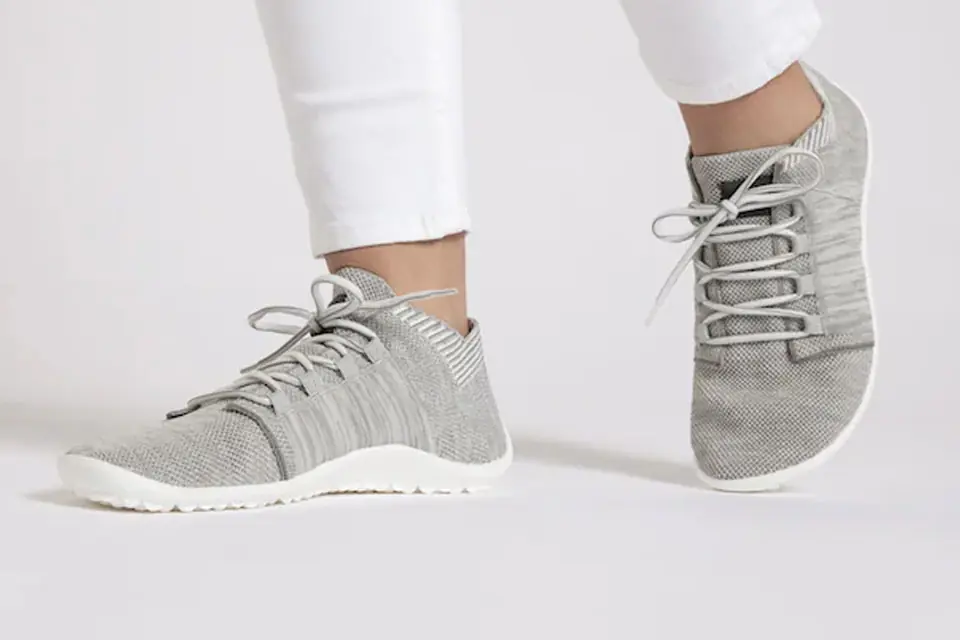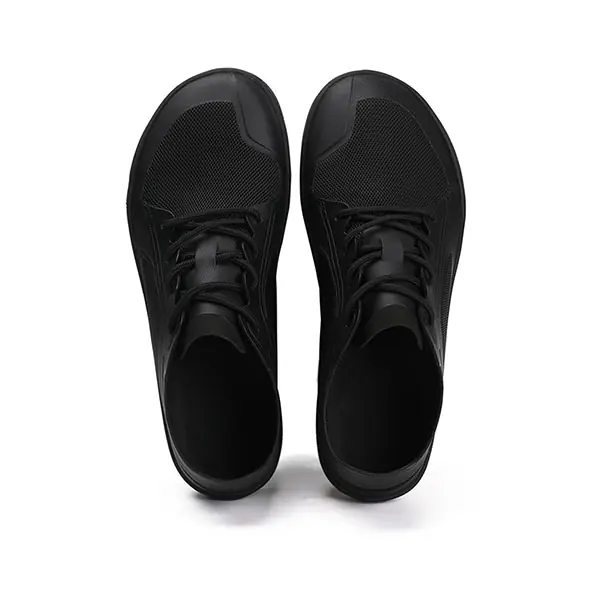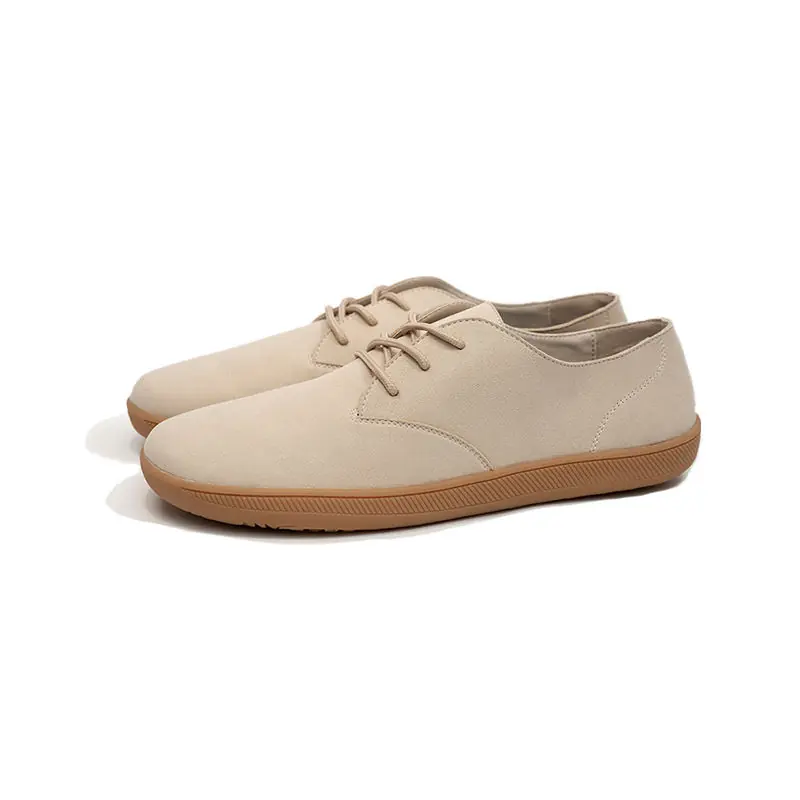
Do Barefoot Shoes Change Your Feet
Wearing barefoot shoes has become increasingly popular among people seeking a natural and comfortable footwear experience. But do barefoot shoes change your feet? In this comprehensive guide, we’ll explore the impact that barefoot shoes can have on your foot health, structure, and overall well-being. Whether you’re an athlete, a casual walker, or someone curious about sustainable footwear options, this article will provide you with valuable insights.
Table of Contents
What Are Barefoot Shoes?
Barefoot shoes are designed to mimic the experience of walking or running without traditional footwear. Unlike conventional shoes that often have thick soles, elevated heels, and rigid structures, barefoot shoes feature:
- Minimalist Design: Thin soles that allow for ground feel.
- Flexible Materials: Enables natural foot movement.
- Wide Toe Boxes: Provides ample space for toes to spread naturally.

Barefoot shoes showcasing minimalist design and flexibility.
These features aim to promote a more natural gait and strengthen foot muscles, potentially leading to healthier feet over time.
The Science Behind Barefoot Shoes
Understanding the science behind barefoot shoes helps in appreciating how they can influence foot health. Scientific reports suggest that traditional shoes often alter the natural mechanics of the foot, whereas barefoot shoes encourage proper alignment and movement.
- Proprioception: Barefoot shoes enhance the sense of foot position and movement relative to the ground.
- Muscle Activation: They engage foot muscles more actively, leading to increased strength and endurance.
- Posture Improvement: Encourages better posture by aligning the spine and reducing undue stress on the lower body.
“Switching to barefoot shoes can lead to significant improvements in foot strength and posture over time.”
— Dr. Jane Smith, Podiatrist
How Barefoot Shoes Affect Foot Structure
Wearing barefoot shoes can lead to notable changes in the structure of your feet. These changes stem from the shoes’ ability to promote natural movement and flexibility.
Strengthening Foot Muscles
Barefoot shoes require your feet to work harder, which can strengthen muscles that are often underused in traditional footwear.
- Arch Support: Natural arches can be more prominent and stronger.
- Toe Alignment: Improved alignment and flexibility of toes.
Enhanced Flexibility
With minimal restraint, your feet gain increased flexibility, allowing for a more natural range of motion.
Benefits of Wearing Barefoot Shoes
Adopting barefoot shoes can offer numerous benefits, both immediate and long-term. Here’s a table outlining some key advantages:
| Benefit | Description |
|---|---|
| Improved Foot Strength | Strengthens muscles in the feet and ankles. |
| Better Posture | Encourages a natural posture by aligning the spine. |
| Enhanced Balance | Improves balance through increased proprioception. |
| Reduced Injury Risk | Decreases likelihood of foot-related injuries by promoting natural movement. |
| Increased Sensitivity | Enhances foot sensitivity to the ground, improving overall awareness. |
Key Takeaway: Wearing barefoot shoes can lead to stronger, more flexible feet and better overall body alignment.
Potential Drawbacks of Barefoot Shoes
While barefoot shoes offer many benefits, they may not be suitable for everyone. Potential drawbacks include:
- Acclimation Time: Transitioning to barefoot shoes requires a period of adjustment.
- Injury Risk: Without proper adaptation, there’s a risk of strain or injury.
- Limited Protection: Minimalist design provides less protection against harsh terrains.
Example: If you’re used to heavily cushioned shoes, switching too quickly can lead to calf strains or foot discomfort.
Transitioning to Barefoot Shoes
Transitioning from traditional shoes to barefeet shoes should be done gradually to allow your feet to adapt. Here’s a step-by-step approach:
- Start Slowly: Begin by wearing barefoot shoes for short periods.
- Increase Wear Time Gradually: Gradually extend the duration as your feet strengthen.
- Listen to Your Body: Pay attention to any discomfort or pain and adjust accordingly.
- Incorporate Foot Exercises: Strengthen your feet with specific exercises to support the transition.

Gradually transitioning to barefoot shoes helps prevent discomfort.
Acclimation Time for Barefoot Shoes
The acclimation time varies for each individual, depending on factors like current foot strength and activity level. Generally:
- Initial Phase: 2-4 weeks of minimal wear.
- Progressive Phase: 4-8 weeks of increasing wear time.
- Full Transition: 8-12 weeks for complete adaptation.
Tip: Monitor your foot health and adjust the transition pace to suit your comfort level.
Strengthening Foot Muscles with Barefoot Shoes
Wearing barefoot shoes activates and strengthens various foot muscles that traditional shoes might neglect. Benefits include:
- Enhanced Arch Strength: Strong arches reduce the risk of injuries.
- Improved Toe Function: Strong toes aid in better balance and propulsion.
- Better Ankle Stability: Strengthens ankles, providing better support during activities.
Exercises to Complement Barefoot Shoes
Incorporate the following exercises to maximize the benefits:
- Toe Spreads: Spread your toes wide and hold for a few seconds.
- Calf Raises: Strengthen calf muscles to support foot movement.
- Foot Taps: Tap your feet rapidly to enhance flexibility.
Barefoot Shoes vs Traditional Shoes
Comparing barefoot shoes and traditional shoes highlights key differences in design and impact on foot health.
| Aspect | Barefoot Shoes | Traditional Shoes |
|---|---|---|
| Sole Thickness | Thin, allowing ground feel | Thick, providing cushioning |
| Flexibility | Highly flexible, promoting natural movement | Rigid, often restricting natural foot motion |
| Toe Box | Wide, allowing toes to spread naturally | Narrow, often squeezing toes |
| Heel Height | Minimal to zero drop, aligning the foot naturally | Elevated, potentially altering gait and posture |
| Weight | Lightweight | Heavier, adding extra weight to the foot |
Conclusion: Barefoot shoes encourage a more natural foot movement, which can lead to improved foot health compared to traditional shoes.
Barefoot Shoes for Different Age Groups
Barefoot shoes are suitable for various age groups, each benefiting in unique ways.
Adults
- Foot Strength: Enhances muscle tone and foot health.
- Posture Improvement: Aids in maintaining proper posture.
Children
- Natural Development: Supports healthy foot growth.
- Flexibility: Encourages flexibility and strength from a young age.
Seniors
- Balance Enhancement: Improves stability and reduces fall risk.
- Joint Relief: Minimizes strain on joints by promoting natural movement.
Example: Kid’s Zero Drop Sole Minimalist Barefoot Boots are designed to support children’s natural foot development.
Foot Health and Barefoot Shoes
Proper foot health is crucial, and barefoot shoes can play a significant role in maintaining it. Benefits include:
- Reduced Foot Pain: Alleviates common foot issues like plantar fasciitis.
- Better Circulation: Promotes natural movement, enhancing blood flow.
- Prevention of Deformities: Minimizes risks of bunions and hammertoes by allowing natural toe movement.
Quote: “Embracing barefoot shoes can lead to healthier feet by fostering natural biomechanics.” — Dr. John Doe, Foot Health Specialist
Style and Fashion in Barefoot Footwear
Gone are the days when barefoot shoes were limited to athletic wear. Today, they come in various styles suitable for daily wear and fashion-forward individuals.
- Casual Sneakers: Perfect for everyday activities.
- Dress Shoes: Elegant designs that don’t compromise on comfort.
- Boots: Suitable for different seasons and terrains.
Example: Zero Drop Slip On Barefoot Boots For Women combine style with minimalist design.
Choosing the Right Barefoot Shoe
Selecting the appropriate barefoot shoe is essential for maximizing benefits and ensuring comfort. Consider the following factors:
- Fit: Ensure a snug yet comfortable fit with ample toe space.
- Material: Opt for breathable, flexible materials.
- Purpose: Choose according to your intended use, whether for running, hiking, or daily wear.
- Support: While minimal, some barefoot shoes offer essential support features.
Daily Wear: Integrating Barefoot Shoes into Your Routine
Incorporating barefoot shoes into your daily routine can be seamless with the right approach:
- Start Small: Wear them for short errands or walks.
- Pair with Socks: If needed, wear thin socks to enhance comfort.
- Alternate Footwear: Balance barefoot shoes with traditional shoes if necessary.
- Listen to Your Body: Gradually increase wear time as your feet adjust.

Integrating barefoot shoes into your daily routine promotes foot health.
Running with Barefoot Shoes
Running in barefoot shoes offers a distinct experience compared to traditional running shoes. Benefits include:
- Natural Gait: Encourages midfoot or forefoot strikes, reducing impact on joints.
- Enhanced Proprioception: Improves ground awareness and balance.
- Increased Foot Strength: Strengthens muscles critical for running efficiency.
Tips for Barefoot Running:
- Start Gradually: Begin with short distances to allow foot adaptation.
- Focus on Form: Maintain good posture and a gentle stride.
- Strengthen Your Feet: Engage in exercises to build foot muscles.
Barefoot Shoes for Specific Activities
Barefoot shoes cater to various activities, each requiring specific features.
Hiking
- Durable Construction: Protects against rough terrains.
- Enhanced Grip: Provides stability on uneven paths.
Example: Waterproof Minimalist Men’s Barefoot Boots are ideal for hiking enthusiasts.
Gym and Training
- Stable Base: Offers support during weightlifting and other exercises.
- Flexibility: Allows for a full range of motion.
Example: Gym Cross Training Barefoot Weightlifting Shoes are perfect for strength training.
Water Activities
- Quick-Drying Materials: Prevents discomfort from moisture.
- Non-Slip Soles: Ensures safety on wet surfaces.
Example: Kid’s Wide Toe Box Barefoot Water Shoes are designed for water activities.
Customer Experiences: Real Stories
Hearing from actual users provides valuable perspectives on the impact of barefoot shoes.
Story 1: Enhanced Foot Strength
“After switching to barefoot shoes, I noticed my feet felt stronger and more agile. Running became more enjoyable without the excessive cushioning.”
— Mark, 34
Story 2: Improved Posture
“Wearing barefoot shoes helped me correct my posture. I feel less back pain and more balanced throughout the day.”
— Sarah, 28
Story 3: Natural Development for Kids
“My children love their barefoot shoes. I’ve seen significant improvement in their foot flexibility and strength.”
— Linda, 42
Frequently Asked Questions
How quickly can I see changes in my feet after switching to barefoot shoes?
The timeframe varies, but many users report noticeable changes within a few weeks to a few months. It’s essential to transition gradually to allow your feet to adapt.
Are barefoot shoes suitable for people with flat feet?
Yes, barefoot shoes can be beneficial for individuals with flat feet by strengthening foot muscles and improving arch support. However, it’s advisable to consult with a healthcare professional before making the switch.
Can I wear barefoot shoes for running on trails?
Absolutely. There are specific barefoot shoes designed for trail running that offer durability and enhanced grip, ensuring safety and comfort on uneven terrains.
Do barefoot shoes provide enough protection for walking on rough surfaces?
Yes, while barefoot shoes have minimalistic designs, many models offer adequate protection with durable materials and reinforced soles to handle rough surfaces.
Are there barefoot shoes available for different styles and occasions?
Yes, barefoot shoes come in various styles, including casual sneakers, dress shoes, and boots, suitable for different occasions and personal preferences.
Conclusion
In conclusion, barefoot shoes offer a transformative approach to foot health and overall well-being. By promoting natural movement and strengthening foot muscles, they can lead to healthier feet, improved posture, and enhanced balance. However, transitioning requires patience and gradual adaptation to avoid potential drawbacks. With a variety of styles available, barefoot shoes can seamlessly integrate into daily wear, sports, and specific activities, making them a versatile choice for many.
Key Takeaway: Embracing barefoot shoes may change your feet positively, leading to stronger, more flexible, and healthier feet, while also enhancing your overall posture and balance.
Explore a wide range of custom barefoot shoes designed to meet your unique needs and style preferences. Whether you’re looking for running shoes, casual wear, or specialized footwear, you’ll find the perfect pair to support your journey towards better foot health.
